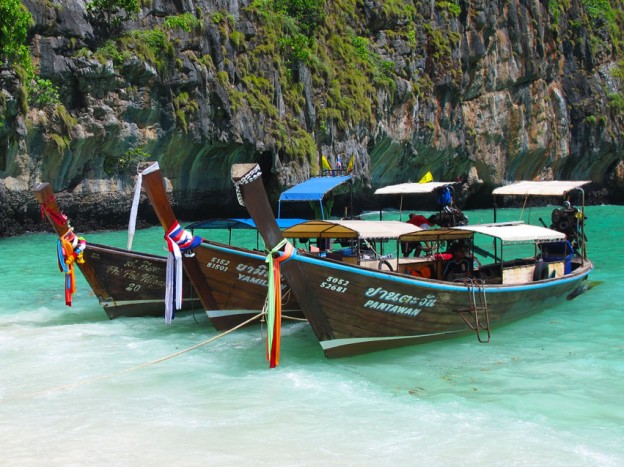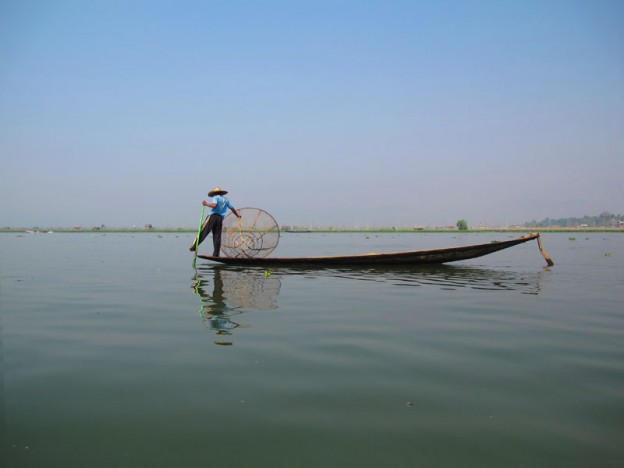I have always wanted to see the Nazca Lines in Peru. Stepping onto the tarmac, I saw a man wearing dark sunglasses being lead down some steps. “He’s the pilot, right?” I said. My friend and the other two people we were flying with were a little surprised when they heard, “Yes.” Then the pilot and co-pilot burst out laughing. They were really good pilots though, and made sure we had a chance to see the lines, especially given that the Nazca Lines are not as big as you might imagine. Often it took a moment to find the particular lines even though we were flying at 2500 feet. The landscape is barren and there are literally thousands of lines going in all directions, criss-crossing each other. Taking photos was difficult—the plane was bouncing around in the updrafts from the heat, it was cramped making it difficult to maneuver a large DSLR camera and lens without hitting another person or something inside of the plane, glare off the windows was bad, and contrast was practically non-existent in the arid landscape. But I thoroughly enjoyed the experience and managed to see most of the main lines.
My Visit to Peru
I just got back from a nice trip to Peru. I really needed a vacation and Machu Picchu was definitely on my list of places to see. Machu Picchu is quit stunning, but there are actually a lot of others things to see in Peru. Of course, keep Machu Picchu for the last since it makes everything else look a less impressive in comparison. I only scratched the surface of places to visit in Peru, though it was fantastic.
Originally I had planned to go to a few more places like Lake Titicaca and Arequipa, but ended up having limited time, so I stuck mostly to the Sacred Valley. There is plenty to see there and I was not disappointed. Almost everyone flies in to Lima and I was no exception. I spent a couple of days in Lima. Lima has some rough spots being such a big city in Latin America, however the neighborhood of Miraflores that I stayed in was really nice.
This was the first place I have ever traveled to outside of North America and northern Europe where a taxi driver did not try to screw me once. I was rather shocked. Taxis are the ambassadors of fraud for most countries, so it was quit pleasant to not have to go through that crap. Everyone in Peru, including in Lima, is really nice and helpful. I expected people to be a bit more jaded with the huge numbers of tourists that move through Peru, but that was not the case—Peruanos are pleasant people.
Prices are not that cheap, especially in Lima and the Sacred Valley. Things start to add up quickly, especially once you get to Machu Picchu. Fortunately, Peruanos are great at setting expectations. They are clear about the price and what you will get for it. I love this. I am happy to pay the price if I know exactly what I am getting. The only problems I encountered where related to this peculiar idea that US dollars need to be in perfect condition. I probably would have thought this insane if I had not encountered it so many times in previous travels.
I believe this picadillo about the need for currency to be in perfect condition stems from the lack of the faith in currencies in general. Developed nations generally do not have massive devaluations, currency crisises, or other currency problems that render their currency worthless (though, just look at what those crazy wackos to the right say in the US and you will see that there are segments of every society that lack faith in their currencies for various reasons). Developing nations have gone through these currency issues more recently and just prefer to make sure that the money is in perfect condition so they have no problems when they try to render it into something tangible.
Cash machines dispense both US dollars and Nuevos Soles. Most places take either, though some places prefer dollars. My trip to Nazca needed to be paid in dollars and a hotel in Ollantaytambo wanted dollars. It is rather amusing to watch people review each bill for perfection. Only slightly annoying when one is refused, especially when it came from the local cash machine.
Of course, many places, like Peru Rail for train tickets to Machu Picchu, take credit cards so that renders the whole issue moot anyway. Using a credit card where possible is best in my opinion, especially with large purchases, because it provides a few levels of additional protection should anything go wrong (in the US, you are protected against fraud, failure to deliver, problems, and usually cards provide some general insurance). Just make sure you are ready to spend. Macchu Picchu requires a bit of planes, trains and automobiles to get to and it is not cheap.
You can save some soles by taking the bus. They are extremely nice in Peru and on my bus to Nazca, Cruz del Sur, my bus company, was giving a breathalyzer test to the drivers and attendant. They also took a video of the process and made them state they were not doing anything they should not have been. They keep track of the passengers too. Given the roads in Peru (and my own slight reservations after my nasty bus accident in Malaysia), I found this reassuring. Bus travel is clearly the way to go in Peru.
Unfortunately for me, I found this out too late. I used LAN Peru to fly to and from Cuzco. That was a mistake. They have a terrible online reservation system that is riddled with flaws. The price of tickets is astronomical for non-Peruanos. LAN Peru prevented me and my friend from sitting together, not because a seat was not available (one was), but because they messed up the reservation. Do not try to talk to them about it. They just give some general excuse and move on without really listening or caring. The sad irony is that the flight was full, but because their system is a mess and their customer service so poor, they turned people away when there was actually a seat available. I got two seats for the price of one, though I was not allowed to sit next to my friend.
Whatever. Not such a big deal for a one and half hour flight. The bus is much better, though. They have bathrooms, food service, sell extra food if you want, and the bus is nice and comfortable. Roads leave a bit to be desired as you are usually climbing up some mountain or come down from some mountain. This can be a bit disconcerting for some people, as they bus sways through the sharp switchbacks, though I did not think it was too bad. You are in Peru, after all, so might as well get used to it.
I managed to take over 1500 photos while in Peru for 11 days (crazy)! Over the next week or so I will post some photos galleries and show you some of the great experiences I had. There are a lot of great things to see and do, and while I only managed to scratch the surface, I had a great time.
A Good Cup of Coffee
One thing that might surprise you when traveling in SE Asia, where a lot of coffee in the world comes from, is that you cannot find a really good cup of coffee very easily. Most of the coffee is the freeze-dried kind that tastes bitter at best, and is completely unpalatable at worst. Sure, in some of the more touristy areas you can find a Starbucks, but you will not find a local coffee shop serving anything other than the freeze-dried coffee.
The main reason for this, at least I am told, is that the quality coffee is exported—most likely to America, where we consume 3.1 cups a day on average. That is not the highest level of consumption, Finland actually consumes almost 10 cups a day, but the US does import the most coffee in the world by far (in excess of $4 billion).
Being from Seattle, I have an appreciation for a good cup of coffee. Seattle has an extraordinary number of coffee shops. Over a third more than Manhattan or San Francisco, and well past the national average. Starbucks is from Seattle, though we have many great local coffee companies here like Vivaci. Seattle’s Best and Tully’s are also from Seattle, but Seattle’s Best is now owned by Starbucks and Tully’s is always on the edge of failure. Starbucks is the clear leader in Seattle and around the world. Consequently, did you know that Starbucks is named after a coffee drinking character in the novel Moby Dick?
I did not grow up drinking quality coffee. My parents preferred Folgers coffee that came in a metal tin. That was quite normal then and gourmet coffee would have been too expensive, if it was even available. My father had an old percolator that he still pulls out when the regular drip coffee maker fails (and they seem to fail rather often). Usually two coffee makers ran at the same time. One for my dad to drink before work and another to fill his thermos. He would run one of them again before he left so my mother would have coffee when she woke up.
They both drank coffee throughout the day and my father still does (my mom passed away years ago, though I have no doubt if she were still alive she would be drinking coffee all day long). Modern coffee makers keep the warmer going for about two hours before they shut off. My dad hates this feature—he wants the coffee on all the time. This makes for a rather awful cup of coffee, but I still drink it when I am visiting.
Of course, my dad still buys relatively cheap coffee from the grocery store and makes it really weak. He will add two or three teaspoons of coffee for a pot, whereas I will add two or three for a cup! I like my coffee really dark and really strong. Actually, I like it exactly the way it is supposed to be brewed. The National Coffee Association (yes, there is one) gives some guidelines. The key is that you use quality, fresh coffee with clean, fresh water. The ration is about 2-3 tablespoons to 6 ounces of water.
No doubt my European friends, especially the Italians, are wondering what the hell I am talking about, and not just because of the measurements. Americans drink drip coffee which, as far as I can tell, is not the norm across the world. There is Italian espresso and the French press, but Americans have Mr. Coffee. The Europeans try to be sympathetic to us by creating the Americano, but that’s just a watered down espresso. Drip coffee is so much better. It is stronger, richer and fuller. And more of it than what comes in a little shot of espresso.
Many Americans adulterate their coffee with cream and sugar. This is probably due to our English roots, where they dump that crap in their tea. In my family only my grandmother did that, and she was English. She hated the taste of coffee but wanted the caffeine boost. She would switch to tea in the afternoon. As children we had the choice of joining her for tea or sitting in the corner watching her have afternoon tea. I opted for the tea rather than just watching, especially since it usually included some sort of cookie or little sandwiches. There is something to be said about the proclivity for tea in the afternoon, though coffee is my real love. In the morning and after dinner are the best.
My parents preferred coffee and they preferred their coffee black without any cream or sugar. It is the only way I drink mine. Once in New York City I asked for a bagel and coffee from a vendor. I got my coffee, but it was pre-made with milk and sugar. I asked for it black and he swapped it. I took a sip and complained their was sugar. He thought I was crazy to want it without anything (probably because New York coffee tastes like dirt). People started complaining, and in true New York fashion I snapped at them, “Shut up! I need my fucking coffee!” They simmered down and I felt rather good about that New York moment the rest of the day, even though the coffee was terrible.
On very rare occasions I might add cream, but never sugar. The Thai have street vendors that sell iced coffee nearly everywhere in Bangkok. They use freeze-dried coffee and load it with heavy cream and sugar. It’s a dramatic sugar boost, but it tastes okay in small doses. You cannot drink it too often because it is just too much. I rarely drink it, just as I rarely have a latter, mocha, or triple skinny extra foam caramel macchiato, whatever the hell that is.
Perhaps the best coffee I have had while traveling is from Indonesia. Most of the good stuff is exported from there too, but they do have some available for tourists. Kopi luwak, or civet coffee, is coffee made from coffee beans that have passed through the wild civet cat’s intestines. It is believed that the coffee berries are of higher quality (apparently the cat’s have a discerning palette) and the digestive process improves the flavor further. Once you get past the fact you are drinking coffee made from cat shit, it is pretty good. The only problem is that it costs about $10 a cup. It is good, but not that good. And let’s not forget, it came from the anus of a cat.
So I just stick with my Peet’s Coffee. I prefer a mix of Sumatra and Sulawesi coffees. While my preference is for drip coffee, but I did not want to buy a coffee maker so I use a French press. I get a nice, robust cup of coffee. I really like drinking it out my Iittala coffee cups that I bought while in Finland for nearly $20 each. Crazy, I know, but a good cup of coffee is important to starting the day right.
Bangkok Flower Market [Photo Gallery]
The Bangkok Flower Market (Pak Khlong Talat) near Wat Po is a fun place to walk around. The market is busiest in the morning. When I took these pictures it was in the evening, so there were not a lot of flowers left. Many of the stalls were being taken down and the vendors were not interested in having someone try to take pictures. I still managed to get a few photos.
Spring in Seattle [Photo Gallery]
Seattle is quite beautiful in the Spring. The weather has been a bit sketchy over the last few weeks, but I was able to get some good shots. This week has been especially nice, so I pulled out my macro lens and had fun with it. These are some of my favorite photos. I took a few at Washington Park Arboretum, but most of them are from around my neighborhood on Capitol Hill.
¡Happy Cinco de Mayo!
Happy Cinco de Mayo! Ever wonder what Cinco de Mayo is and why we celebrate it in the US? Today is your lucky day, here is a history lesson…
Cinco de Mayo, or 5th of May in English, is celebrated in the United States and the Mexican states of Puebla and Veracruz where it is called El Día de la Batalla de Puebla or The Day of the Battle of Puebla. It is a celebration of Mexican pride and heritage, not Mexican Independence Day (that is in September). In fact, it is not even a national holiday in Mexico!
So what is Cinco de Mayo then? Cinco de Mayo commemorates the Mexican Army’s success over the French on May 5, 1862. The Mexican Army rarely won a battle, so when they whipped French derrières it was a big deal. The Mexican Army also happened to be successful at another famous battle, the Battle of the Alamo in 1836—go figure. The Mexicans’ success at the Alamo emboldened the Texans in their fight for Independence from Mexico, so you can thank Mexico for Texas (not sure we should, though).
The Battle of the Puebla was not strategically important, but it did provide a much needed morale boost to the Mexican Army and people. The success was short lived, however. The French came back just a year later and kicked Mexican culo. Despite the battle’s lack of strategic importance, it was still significant. The Mexicans were out numbered by the French, almost two to one, and the French were much better equipped. Defeating them was surprising and quite a big deal. More importantly, no European force has invaded a country in the Americas since the Battle of the Puebla. Thank you, Mexico!
So, why is this holiday so much more celebrated in the US than in Mexico?
There are couple things to understand about the situation at the time. First, it is important to know that the American Civil War was going on during this time (1861-1865). The American West saw the Mexican success at the Battle of the Puebla as representing freedom and democracy in the early years of the Civil War. The American West, specifically former Mexican territories of California, Oregon and Nevada, sided with the non-slave states of the North during the Civil War. In the eyes of many Northern Americans, the South was seen as trying to destroy the greatest democracy ever created. For the North the Civil War was about preserving the Union and for the South the Civil War was about preserving slavery.
Second, the French were likely in Mexico because they wanted to help the South win the Civil War. Essentially, the United States was a proxy for the fighting between the French and the British (the British supported the North). The French saw a Northern win in the Civil War as against their interests. A united America was good for the British and not so good for the French. The irony in all of this is that European meddling in the US had been going on from the American Revolution right up to World War I. Yet, it was a strong and united America that helped save the Europeans not once, but twice (you’re welcome).
Many historians believe that if the French had won at the Battle of the Puebla, they would have used Mexico as a base to aid the South in the Civil War. Mexico’s success at the battle of the Puebla prevented Napoleon III from supplying the South which would have changed American history drastically. Thus, Cinco de Mayo is recognition for Mexico helping the United States maintain the Union. Today, Cinco de Mayo has moved beyond the West to become a celebration of pretty much anything Mexican or of Mexican heritage—from César Chávez to mariachi. It is really a recognition of the history and strong ties that the United States and Mexico share.
¡Viva México! ¡Muchos gracias y feliz cinco de mayo!
Photo: Dungeness Spit
Dungeness Spit, Washington, USA
Dungeness Spit is a 5 mile long sand spit that juts out into the Straight of Juan de Fuca in the Puget Sound. It’s a popular place for people to visit and if you start early enough in the day you can make it out to the lighthouse. The spit is a nature reserve with grasses, which this photos captures, so there are areas you cannot visit (but you can photograph), and the beach is beautiful with washed up logs scattered along it. One year, after a huge storm, there were trees lying on the beach all the way from Japan.
My Favorite Photos of 2012
I take a lot of photos when I travel. Sometimes I spend some time to make sure they turn out great, and other times I just snap the shot and hope for the best. I visited quite a few countries in 2012. I think I managed to get a lot of great photos, though the following five photos happen to be my favorite photos of 2012.
Long-Tail Boats, Koh Phi Phi, Thailand
I took this photo at Koh Phi Phi Ley. There were hundreds of people mulling around, and many boats coming and going (Koh Phi Phi Ley is a very popular tourist destination and is where the Beach was filmed). I was about to give up on every getting an image of long-tail boats without people climbing on or off, other boats in the way, the boats floating every which way, when finally everything seemed to come together and I got this classic shot.
Fisherman, Lake Inle, Burma (Myanmar)
The fishermen on Lake Inle have a unique style of paddling with one leg. Nowhere else is this done but here, and it’s incredible to watch as they paddle and go about their work. Getting a good photo is very difficult. My boat is moving (rather fast) and bobbing up and down. Their boat is moving and they are working (as well as paddling). The lake is crowded, but finding the right moment when a fisherman is paddling, no other boats are around, the lighting is right, and the movement isn’t too crazy is almost impossible. I took hundreds of shots, but this is the only one to turn out—and I did no post production to it. Amazing.
Taj Mahal, Agra, India
 I have a classic shot of the Taj Mahal that I was very proud to have captured given the number of people trying to get the exact same shot as you enter the grounds. However, this is my favorite photo of all of the photos I took of the Taj. I chose to make it black and white to make it feel a bit older and add a sense of mystery to the photo. I especially like that there are only a few people in the shot, though they provide a sense of scale to the photo.
I have a classic shot of the Taj Mahal that I was very proud to have captured given the number of people trying to get the exact same shot as you enter the grounds. However, this is my favorite photo of all of the photos I took of the Taj. I chose to make it black and white to make it feel a bit older and add a sense of mystery to the photo. I especially like that there are only a few people in the shot, though they provide a sense of scale to the photo.
Long-Tail Boat, Koh Lipe, Thailand
 There were several long-tail boats tied up and empty along the beach at sunset on Koh Lipe. Most of them were work boats used to ferry supplies to Koh Lipe, but this was one was beautiful. The tide was out and the water shallow, so I spent some time in water up to my stomach getting a good shot of the colorful boat and sunset.
There were several long-tail boats tied up and empty along the beach at sunset on Koh Lipe. Most of them were work boats used to ferry supplies to Koh Lipe, but this was one was beautiful. The tide was out and the water shallow, so I spent some time in water up to my stomach getting a good shot of the colorful boat and sunset.
Palolem Beach, Goa, India
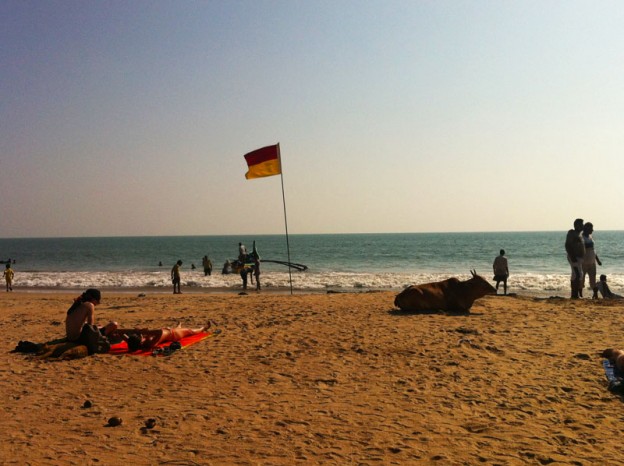 This is perhaps my most favorite photo ever. It’s not perfectly composed (there is a chopped off lef to the right and the horizon is crooked), but I love it. The photo is a bit grainy, making it look like it was taken with an older camera, and the colors are muted, giving it a sense of age. Perhaps the best thing about it, though, is that it captures Goa perfectly. Where else would you find a cow relaxing on the beach while people sunbath?
This is perhaps my most favorite photo ever. It’s not perfectly composed (there is a chopped off lef to the right and the horizon is crooked), but I love it. The photo is a bit grainy, making it look like it was taken with an older camera, and the colors are muted, giving it a sense of age. Perhaps the best thing about it, though, is that it captures Goa perfectly. Where else would you find a cow relaxing on the beach while people sunbath?
I Found God on Koh Lipe
Until my friends Christine and Drew told me they were staying on Koh Lipe and asked me to come visit, I had no idea the island even existed. Mostly I was just happy to be able to hang out with my friends. We hadn’t seen each other in a while so it was nice to catch up with them for a few days. But, I had no idea just how wonderful Koh Lipe would be.
Southern Thailand is filled beautiful islands all along the Andaman Sea and Gulf of Thailand. Many of them are quit developed and touristed, though. Koh Phi Phi, a very beautiful island, is so overrun now by tourists that it isn’t nearly as enjoyable as it used to be. Just six years ago it was far better than it is now. Koh Lipe is trying hard to avoid that fate, and so far it seems to be succeeding.
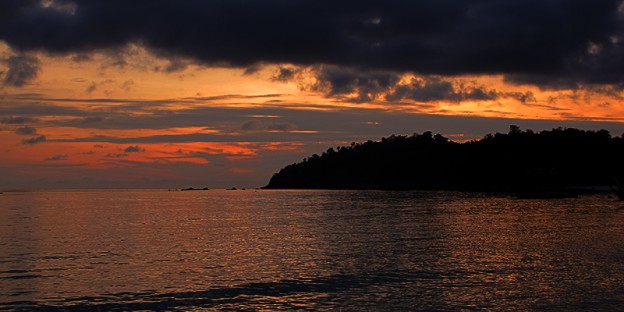
Koh Lipe is similiar to Koh Phi Phi in that there are no major roads and most traffic is by foot (though, there are a few motorcycles on Koh Lipe). The major difference is that Koh Lipe is a bit more challenging to get to in the off season. You have to head to Satun and then take a ferry to Koh Lipe. In the high season, that changes dramatically as direct ferries start running. Literally, the day the ferries start running the island population starts to increase.
While high season was just starting as I was leaving Koh Lipe, I was told that it only lasts for about four months and while it gets busy, it really doesn’t reach the fevered pitch of Koh Phi Phi. Besides, many people still don’t know about Koh Lipe and even if they do, it is farther from the main tourist hot spots so not as many people visit.
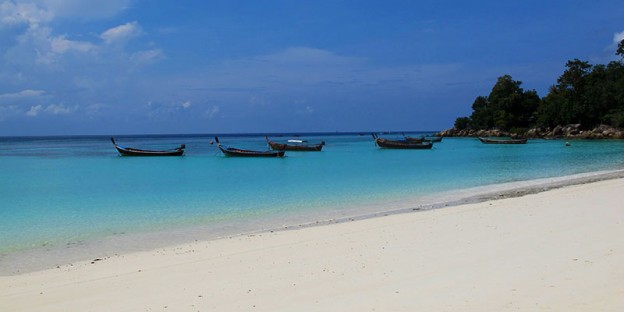
I really hope it doesn’t turn into a Koh Phi Phi, or worse, Koh Smaui, Pattaya, or other over developed destinations. Koh Lipe has beautiful beaches and gorgeous sunsets. The island is very laid back and the people are genuinely friendly. Prices are a little high, but this is due to the seasonal variations of tourism and the fact that everything has to be brought in by boat (Koh Lipe is a very small island at the very south of Thailand, bordering with Malaysia).
I stayed in a little hut on the beach at a place called Cafe Lipe (they have a nice little restaurant out front which is worth visiting since the food is awesome). The Thai/Swiss couple that run the place are very friendly and I had great conversations with them on an almost daily basis. I only planned on staying for two or three days, but ended up staying nine days. Every morning I would extend by one day, to the point that the owners just told me they would see in the morning when I would extend again. Apparently this is a common situation on Koh Lipe.
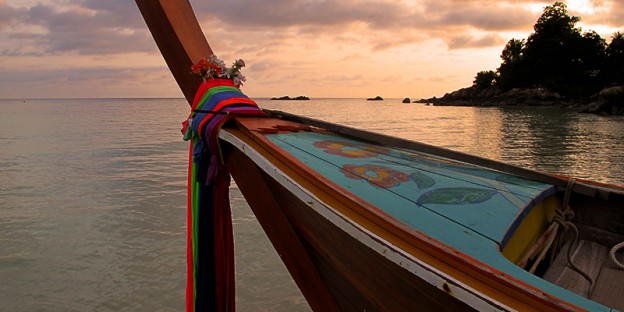
Even after nine days I was really reluctant to leave. Even when I did, I said I would probably be back and the owners just smiled and said, “Yes, you will.” Koh Lipe is an easy place to love. You just sort of fall in and relax. No pressure. No problems. Just kick back on the beach during the day, go for beers on the beach at night, and maybe head to one of the small bars in “town.”
Perhaps the coolest thing about Koh Lipe is that I met God. Yes, I personally met God. Turns out, God lives on Koh Lipe, is Thai, gay, an atheist, and runs a bar. Who knew? I can honestly say I found God on Koh Lipe and had a few beers with him. He’s a great guy. If you visit Koh Lipe, check out God’s bar, Mellowmango. You too can find God on Koh Lipe.
Jumping Around South Thailand
After staying in Bangkok for several months, I decided it was time to get out and do some traveling again. After all, that’s why I went half way around the world. I was willing to stay in Bangkok so long because I was dating someone. I am not a huge fan of Bangkok. It’s fine to visit for a while, but any longer and it starts to wear on the nerves. It’s a big city with massive amounts of traffic congestion. Not something I consider all that appealing. So I went south.
Koh Samui

My first stop was Koh Samui, the second largest island in Thailand after Phuket. It’s in Surate Thani, so I took a night train and then a bus to the ferry terminal that takes you Koh Samui. I could have flown and saved a considerable amount of time—the bus takes almost 2 hours to the ferry terminal, and the ferry takes an hour; never mind the long train ride—but I enjoy the land travel and find it requires a lot less planning (it’s also cheaper).
Koh Samui is rather developed, but not in the seedy way that Pattaya is. They are definitely catering to tourists with loud bars and expensive restaurants, but if you search a little you can find inexpensive local food joints. My hotel was extremely nice for 500฿. That is more than I usually spend, but I was in the mood to relax in a nice place after my break up and getting out of Bangkok.
The beaches are rather nice in Koh Samui. I pretty much just hung out on them during the day and went out with some Danish friends I met at night. We slogged our way to a really nice bar up a giant hill (sweating the entire way) only to find it was extremely over priced and empty! That sucked. The staff was doing everything they could think of to make us stay, even showing us buckets—totally out of place in a venue like that. We worked our way back to the main drag and drank cheap beer, played pool, and talk about how Denmark is source of everything in the world. =)
Most people head to Koh Phangan for the half moon and full moon parties, and then to Koh Tao. I thought about doing this—not for the parties, but to see the islands—but my new Danish friends were so awesome I went with them to Ao Nang in Krabi.
Ao Nang, Krabi
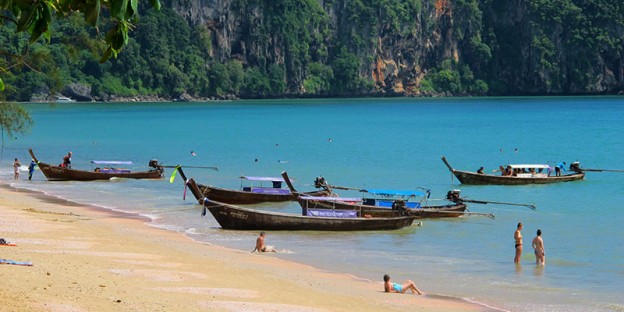
The ride to Ao Nang was a mess. We took a short bus ride to the ferry terminal and then a ferry to the mainland. During that time, our bags had been riffled through. Everyone had something taken. It was often stupid stuff, like jeans, shirts, flip flops, and other oddities that didn’t make much sense. Some people had credit cards, cell phones, cameras, and other valuables in their bags that were stolen. Why they put that stuff in their bags instead of on their person is beyond me.
The worst part was the bus company refused to help us. They would not call the police. They said we had to go to the airport and they would not help. Nor would they hold the bus for us or let us take a later bus. Me and my Danish friends took the bus since we didn’t lose anything worth worrying about, but some Israeli girls lost a lot. When they tried to get help the staff was so rude it was almost hard to believe we were in Thailand. The driver was a total jackass and even drove off with the door open (almost running over one of the girls). It was crazy.
But it got better. The driver dropped us off in the middle of nowhere and we were told by a real rude lady we would have to pay to get to Ao Nang. Fortunately, I had kept a copy of my receipt and the Danish girls were able to get their travel agent to call for them. Turned out were were a short distance away from where we needed to be even though they told us otherwise. The whole experience left a bad taste in my mouth because is was such an organized racket. Even people that don’t have things stolen still get screwed out of a few hundred baht at that last “stop.”
Once we were in Ao Nang it was really nice. I had one of the best hamburgers of my life there and the music scene is truly awesome. They have a local live band playing covers of really great music at one bar that was really good. We managed to close that place down. I also had a really good elephant trek that was fun (and it helped that my elephant driver was ridiculously sexy). We didn’t spend any time on the beach, but they looked nice. I probably could have stayed a bit longer, but once again the Danish girls were on the move and they were so much fun I had to go with them to Koh Phi Phi.
Koh Phi Phi
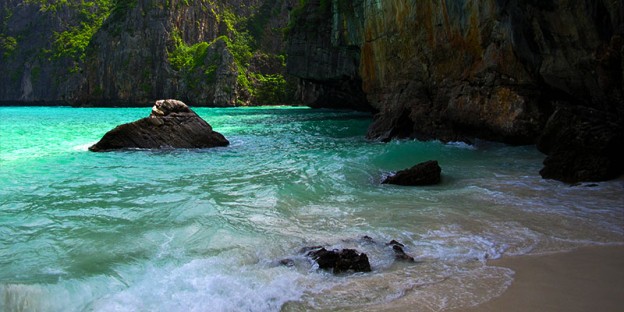
I’ve been to Koh Phi Phi many times. It really is a beautiful place, but it is getting terribly overrun with tourists and backpackers. The prices are high and the streets so clogged it is nearly impossible to get around. The beauty is still there, but I doubt it was last much longer. There are simply too many people. It’s so focused on tourism it is almost impossible to find good Thai food. Still, I had a good time.
I avoided the tourist stuff since I’ve done it many times before. Instead I just relaxed on the beach or walked around town. There are no cars on Koh Phi Phi, so it is just people, bicycles and people pushing carts around. The bar scene is pretty strong and clearly overrun by stupid drunk backpackers. Not really my thing, though I did meet a really nice lady from Switzerland and a nice guy from Brazil at a more laid back bar. Always meeting people!
Koh Phi Phi is where I had to leave my Danish friends. We took a ferry to Krabi Town together, but they were heading to Bangkok and on to Seam Reap, Cambodia. I stuck around in Krabi Town for a couple days waiting for my ferry to Koh Lipe—perhaps the best island I have ever been to in my life!
